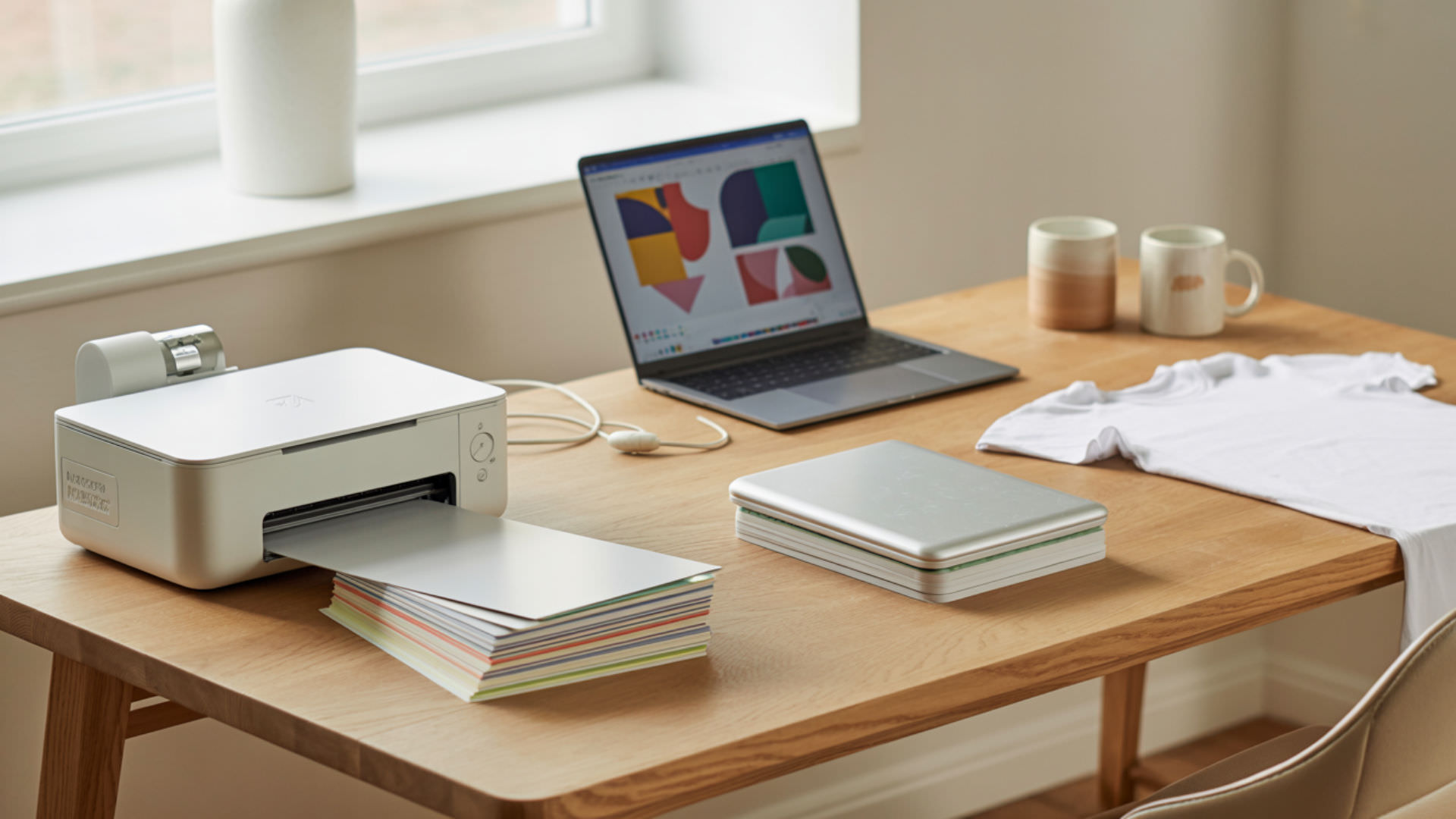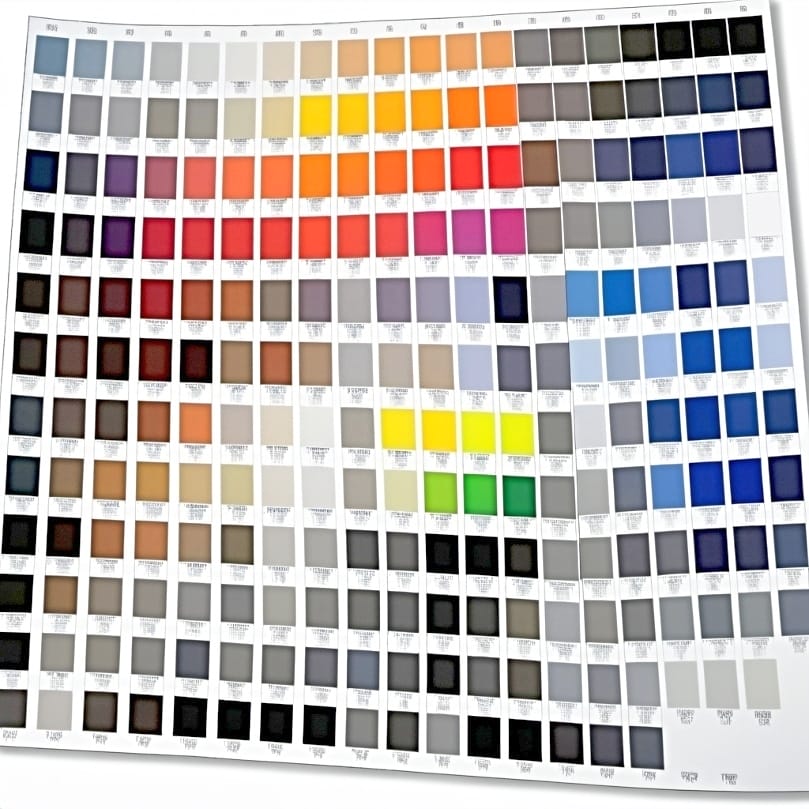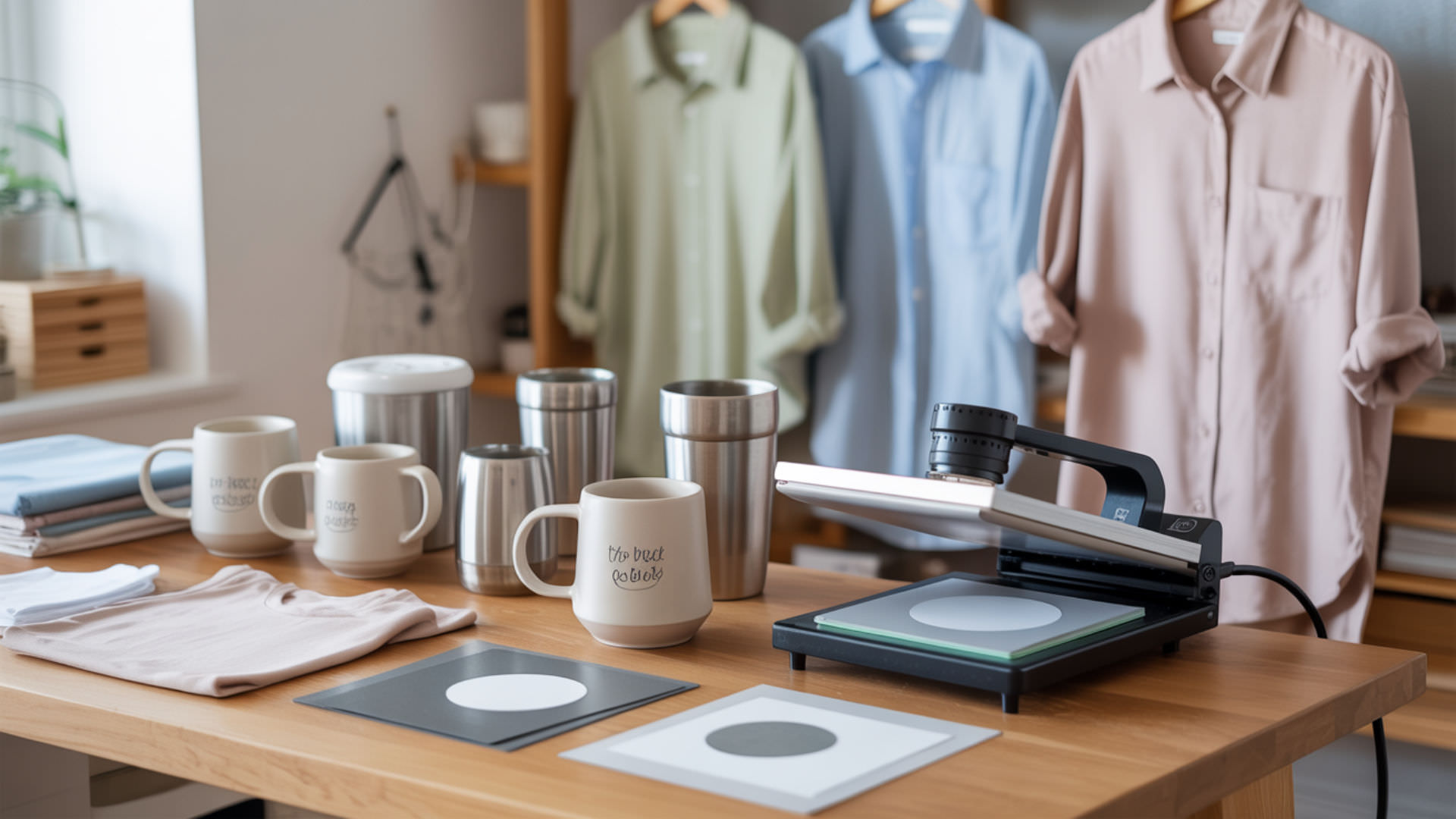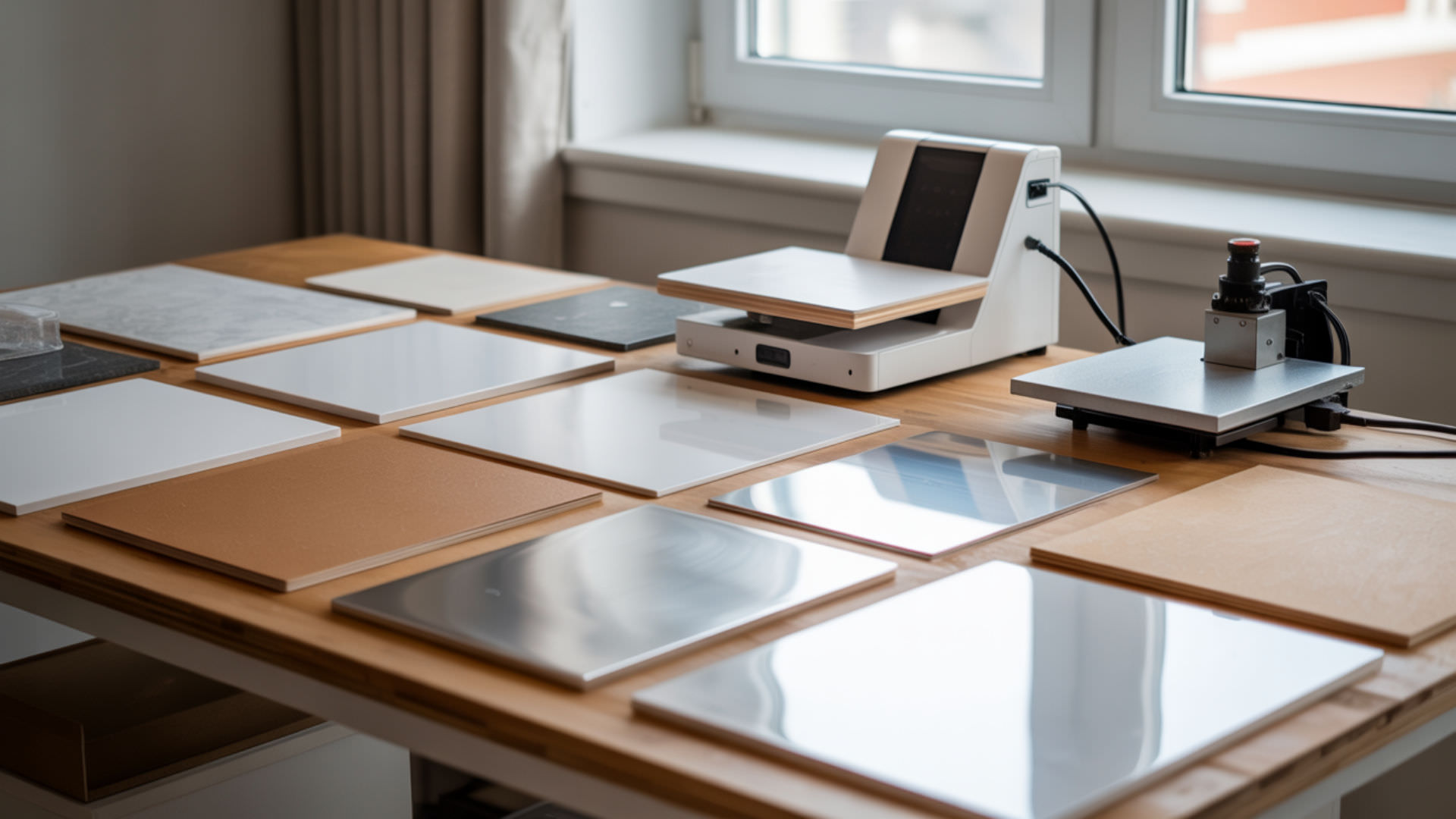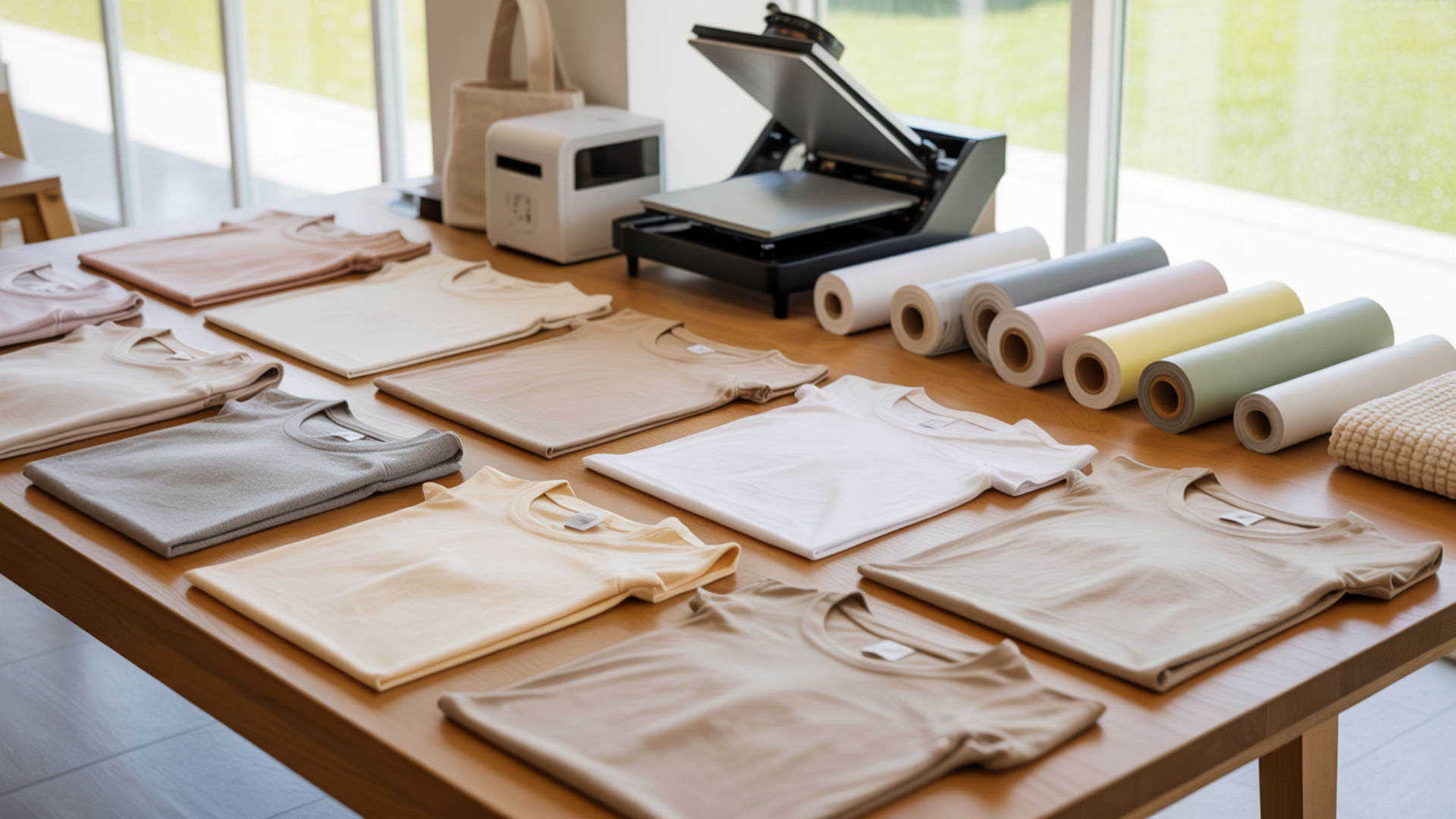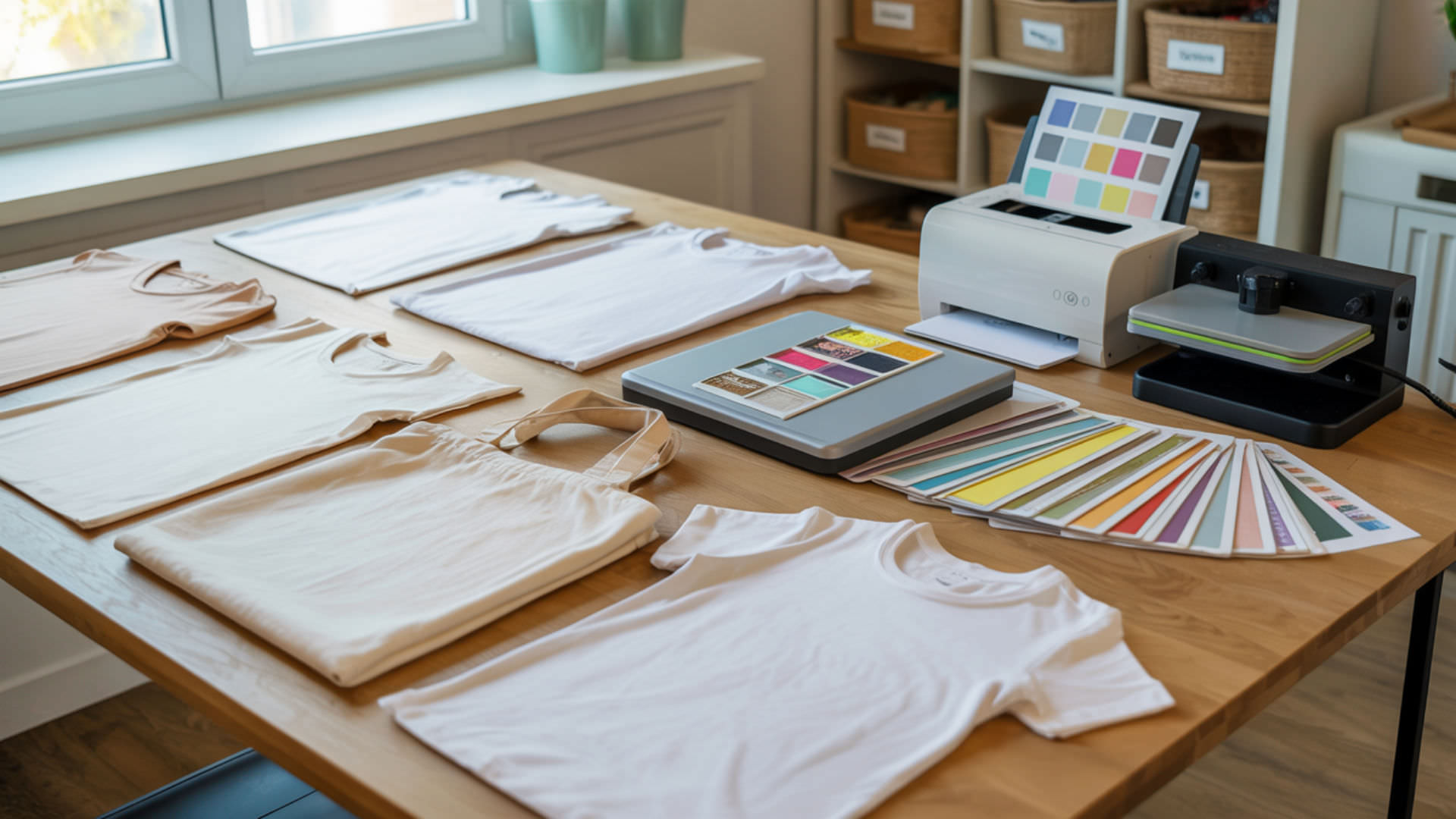Table of Contents
ToggleSublimation relies on dye diffusion during a phase change process that converts solid ink to gas, bonding color permanently within polyester fibers. Screen printing pushes plastisol ink through a mesh stencil onto fabric surfaces where it sits as a raised layer. Our comprehensive guide on sublimation vs other printing methods covers screen (mesh stencil) techniques alongside DTG, DTF, and vinyl alternatives for complete comparison. For equipment selection including sublimation transfer paper requirements, see our guide on the best printer for T-shirt printing.
Key Takeaways
- Sublimation’s dye diffusion bonds color permanently within polyester fibers; plastisol ink sits on fabric surfaces and may crack over time with washing.
- Screen printing excels on cotton with bold, opaque colors using plastisol ink; sublimation delivers photographic quality exclusively on polyester substrates.
- Screen printing scales efficiently for bulk orders once screens are prepared; sublimation costs remain constant per unit regardless of quantity.
Which printing method is genuinely cheaper for most projects?

Screen printing requires stencil setup, ink flooding passes through the mesh, and curing at 300–330°F—significant upfront time but pennies per unit at scale. Sublimation uses heat, pressure, and time in a single transfer press at 380–400°F for 35–60 seconds with consistent per-unit costs. For runs under 24 pieces, sublimation typically costs less; above 50–100 identical units, screen printing’s economics improve dramatically.
Is sublimation or screen printing better for volume?
Screen printing delivers superior volume efficiency once the mesh stencil screens are prepared and registered for production. Each additional unit costs only ink—no per-piece setup required. Workflow complexity decreases significantly after initial preparation is complete. Sublimation maintains constant costs regardless of quantity because each transfer requires individual printing, pressing, and peeling steps.
What is the cost of sublimation shirts?
Sublimation shirt costs include polyester blank garments ($3–$8), sublimation transfer paper ($0.10–$0.30 per sheet), and ink ($0.20–$0.50 per print). Total per-shirt cost runs $4–$10 depending on design coverage and blank quality. The polyester requirement limits substrate options compared to screen printing’s cotton compatibility, but eliminates screen setup costs entirely for small batch production.
What equipment do you really need to start screen printing versus sublimation?

Screen printing demands mesh stencil screens ($20–$50 each), photoemulsion and exposure unit ($200–$500), a squeegee ($15–$30), and a curing system ($500–$2,000+). Sublimation requires only a printer ($300–$800), sublimation paper, and heat press ($200–$500). Both sublimation and DTF printing share the heat press requirement for final bonding—see our DTF vs sublimation comparison for transfer method differences.
Do you need special ink for sublimation paper?
Sublimation requires specialized dye inks designed specifically for sublimation transfer paper that convert from solid to gas during the phase change process at 380–400°F. Regular inkjet inks cannot sublimate—they lack the chemical composition for heat-activated transfer. The paper features a polymer coating that holds dye until heat releases it into polyester fibers permanently.
⫸ Click Here For Best Selling Sublimation Printers And Products ⫷What type of shirt is used for sublimation?
Sublimation works only on polyester fabrics with 65%+ synthetic content or items with a polymer coating applied to the surface. Research from the U.S.The dye molecules require synthetic polymer chains to absorb gaseous dye during transfer. 100% polyester delivers the most vibrant results; polyester blends produce increasingly faded prints as cotton percentage rises. White or light-colored polyester shows colors most accurately.
How long does each printing method last on fabric?

Sublimation’s dye diffusion creates permanent color integration—prints last the garment’s lifetime without fading, cracking, or peeling. Durability differences emerge because sublimation dye becomes part of the fiber structure itself. Screen-printed plastisol ink forms a surface layer that withstands 50–100+ washes but can crack or peel over time, especially with improper curing or aggressive washing cycles.Screen printing typically relies on plastisol ink, which is PVC-based and forms a surface film on fabric rather than integrating into fibers, a characteristic consistent with how vinyl chloride–derived materials behave. [1]
How many times can you use a screen print stencil?
A properly prepared stencil on quality mesh made from silk, polyester, or nylon survives thousands of impressions when maintained correctly. Mesh durability determines lifespan—higher thread counts (230–305) last longer than coarse screens (110–160). Plastisol inks extend screen life because they don’t dry in the mesh openings. Reclaiming screens with emulsion remover allows indefinite reuse of mesh frames.
What lasts longer, screen printing or heat transfer?
Properly cured plastisol ink screen prints typically outlast standard heat transfer vinyl, surviving 50–100+ washes versus vinyl’s 25–50 cycles. Curing quality through flash drying at 300–330°F directly impacts screen print longevity—under-cured prints fail faster. Sublimation heat transfers on polyester outlast both because dye becomes part of the fiber permanently, showing no degradation after hundreds of washes.
Is screen printing still relevant compared to modern sublimation?
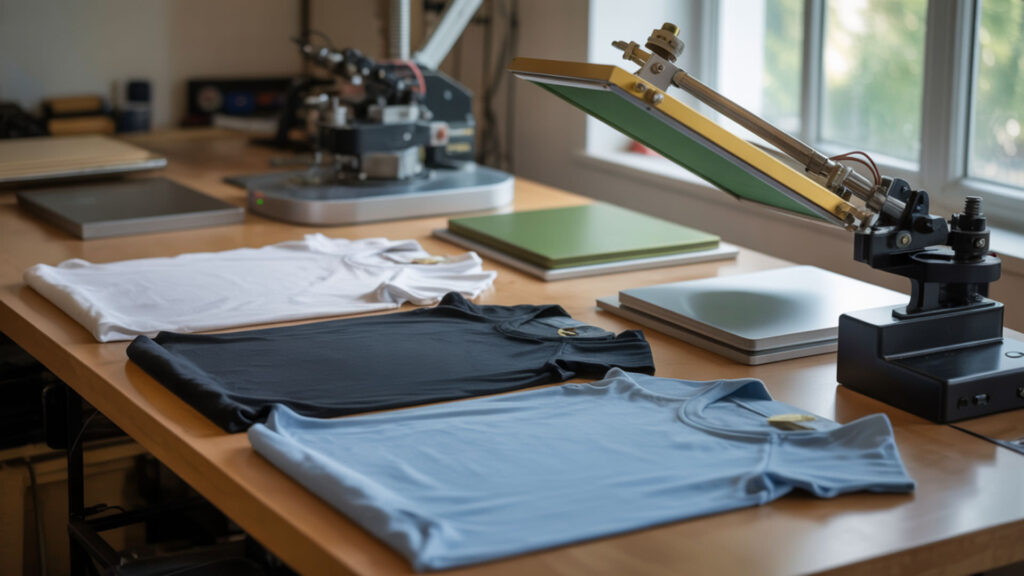
Screen printing remains highly relevant for cotton-based bulk production where plastisol ink’s opacity and vibrant spot colors outperform digital alternatives. Workflow complexity requires more setup time, but per-unit costs drop dramatically at scale. Modern digital methods like sublimation offer convenience similar to DTG printing—our DTG vs sublimation comparison explores how dye diffusion technology differs from inkjet-based garment decoration.
What are the disadvantages of screen printing?
Screen printing’s main drawbacks include multi-color registration challenges requiring precise alignment of separate screens for each color. Each ink flooding pass through the mesh adds labor time and complexity. Each color needs a separate screen ($20–$50), making photographic or gradient designs impractical. Minimum order requirements often start at 12–24 pieces to justify extensive setup time and costs.
Does screen printing crack?
Plastisol ink screen prints can crack because the ink sits as a surface layer rather than integrating into fabric fibers. Durability differences depend on cure quality, ink thickness, and garment care practices. Under-cured prints at temperatures below 320°F crack sooner than properly cured applications. Over-inking creates thick, inflexible layers prone to cracking during stretching or repeated washing.
What materials work best for screen printing versus sublimation?
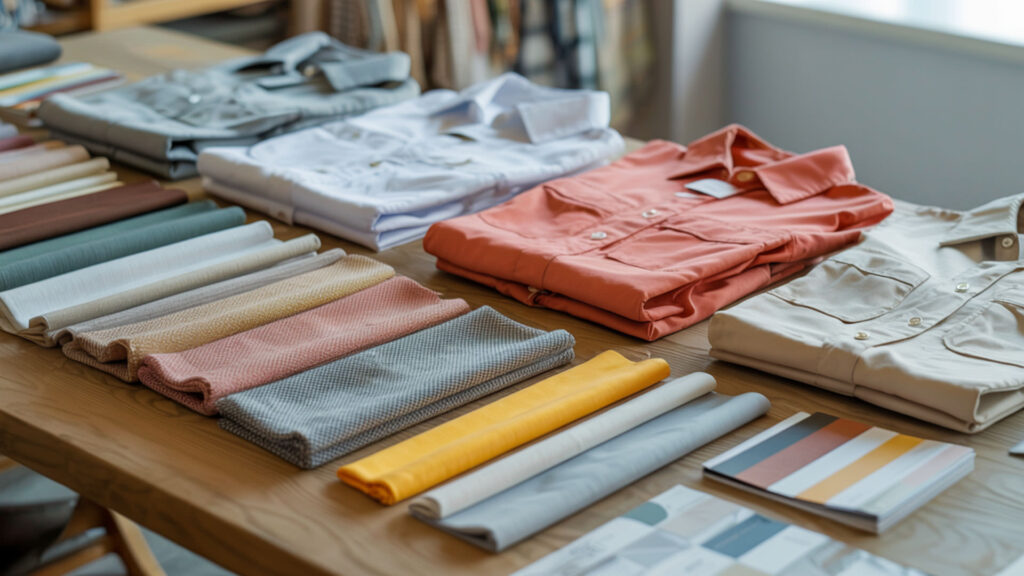
Screen printing with plastisol or water-based screen printing ink works best on cotton and cotton blends, delivering opaque coverage on any fabric color. Fabric compatibility differs significantly for sublimation, which requires polyester content of 65%+ for acceptable results.
Can you sublimate on cotton?
Cotton lacks the polymer coating or synthetic structure required for dye diffusion to occur. Without polyester’s polymer chains, gaseous sublimation dye cannot bond to natural fibers—it simply washes away after the first cycle. Cotton-poly blends with less than 65% polyester produce faded, unacceptable results. For cotton garments, use screen printing, DTG, or DTF methods instead.
What is screen printing best used for?
Screen printing excels at bold, opaque designs using plastisol ink pushed through a stencil onto cotton—team uniforms, promotional shirts, and branded apparel in quantities of 24+ pieces. The stencil method produces vibrant spot colors with excellent coverage on dark garments without requiring separate white underbases for each unit. Bulk orders with 1–6 colors achieve the lowest per-unit costs.
Which method produces better quality results for different applications?

Sublimation’s dye diffusion produces photographic quality with smooth gradients and unlimited colors—ideal for all-over prints and detailed imagery on polyester. Color reproduction differences emerge because screen printing relies on halftoning and dot patterns for gradients while sublimation renders continuous tones. Screen printing reproduces gradients using halftone dot patterns, where varying dot size and spacing simulate tonal changes rather than producing true continuous color. [2]
Is screen printing dying?
Screen printing isn’t dying but is losing market share to digital methods with simpler workflows. Workflow complexity and extensive setup time deter small-batch customers who prefer on-demand digital printing instead. However, screen printing maintains durability differences advantages for bulk production—no digital method matches its per-unit economics above 100 pieces or its opacity on dark cotton garments.
What is the advantage of sublimation over screen printing?
Sublimation’s primary advantage is permanent, integrated color through dye diffusion during the phase change process—no cracking, peeling, or fading ever occurs. Additional benefits include unlimited colors without per-color fees, photographic reproduction quality, zero texture on printed areas, and no minimum order requirements. Setup takes minutes versus hours for screen printing’s stencil preparation.
How do you do sublimation on shirts step-by-step?
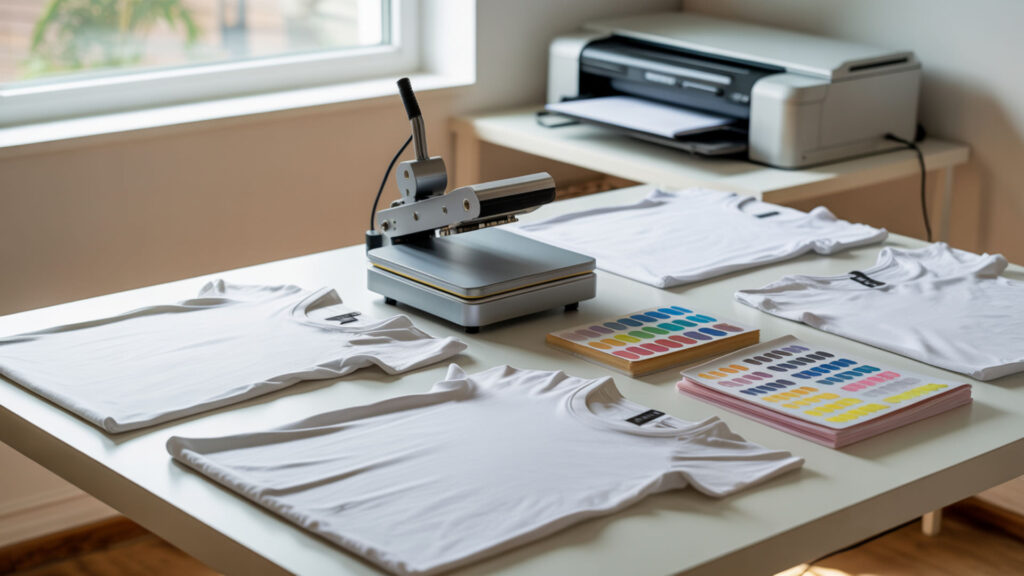
- Print your mirrored design onto sublimation transfer paper using sublimation ink. The mirror image ensures correct orientation after transfer; standard inkjet paper and ink will not work for this process.
- Preheat your heat press to 380–400°F and pre-press the polyester shirt for 3–5 seconds. This removes moisture and wrinkles that cause uneven transfers or ghosting artifacts on the final print.
- Position the sublimation transfer paper face-down on the shirt and secure with heat-resistant tape. Taping prevents paper movement during pressing, which causes blurred or doubled images on the garment.
- Apply heat, pressure, and time—press for 35–60 seconds at 380–400°F with medium-firm pressure. This combination triggers the phase change that converts solid dye to gas for fiber penetration.
- Remove the transfer paper immediately (hot peel) or after cooling (cold peel) based on paper type. Hot peel produces glossy finishes; cold peel creates matte appearances on most substrates.
- Allow the garment to cool flat before folding or packaging for shipping. Cooling prevents dye migration to other surfaces and ensures the transfer sets completely within fibers.
Ready to choose your printing method?
Your decision depends on fabric type, order volume, and design complexity requirements. Sublimation’s dye diffusion delivers permanent, photographic results on polyester with zero setup time needed. Plastisol ink screen printing provides unmatched opacity and economics for cotton bulk orders exceeding 24 pieces. Match your primary product line’s material and typical order quantities to the method that serves them best.
Frequently Asked Questions
Is sublimation ink thicker than regular?
Sublimation ink is actually thinner than plastisol ink because it’s designed to convert to gas during the phase change process at high temperatures. The dye molecules penetrate polyester fibers rather than sitting on top, creating zero texture or thickness. Screen printing plastisol creates a noticeable raised layer; sublimation produces a completely smooth surface identical to unprinted fabric.
Can you combine screen printing and sublimation?
Combining methods is possible but requires careful sequencing on polyester substrates. Screen print first using low-bleed plastisol ink, cure completely at proper temperatures, then sublimate additional elements afterward. The sublimation dye won’t bond where plastisol ink covers the fabric. This hybrid approach suits designs needing both opaque spot colors and photographic elements.
What is the difference between sublimation and screen printing?
Sublimation converts solid dye to gas during a phase change that bonds color permanently within polyester fibers—no texture, no cracking possible. Screen printing pushes plastisol ink through mesh stencils onto fabric surfaces, creating a raised layer. Fabric compatibility differs entirely: sublimation requires polyester; screen printing works best on cotton. Both have distinct cost structures favoring different order sizes.
Do you use SVG or PNG for sublimation?
PNG files work best for sublimation because they preserve transparency and support full-color photographic images at high resolution (300+ DPI recommended). SVG files suit vector graphics but must be exported to PNG at print resolution before sublimation printing. Always use transparent backgrounds—white areas in your file print as white on the shirt, even on white polyester garments.
What kind of ink is used for screen printing?
Screen printing primarily uses plastisol ink (PVC-based) or water-based ink depending on application requirements and fabric compatibility needs. Plastisol cures at 300–330°F, sits on fabric surfaces, and delivers opaque coverage on any color garment. Water-based inks absorb into fibers for softer hand feel but require different curing parameters and work best on lighter fabrics.
References
- Vinyl chloride – cancer-causing substances. (n.d.). Comprehensive Cancer Information – NCI. https://www.cancer.gov/about-cancer/causes-prevention/risk/substances/vinyl-chloride?utm
- Visitor anti-robot validation. (n.d.). Visitor anti-robot validation. https://gallery.lib.umn.edu/exhibits/show/pre-separated-art/press-halftone?utm_




